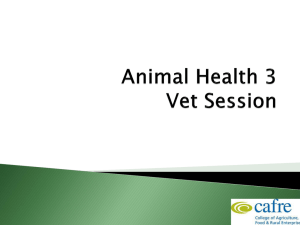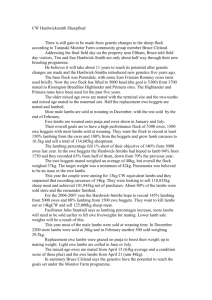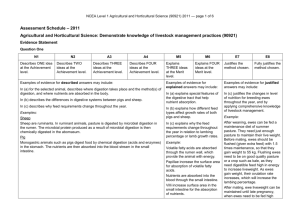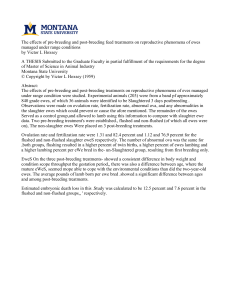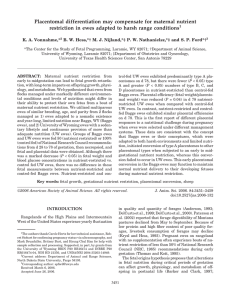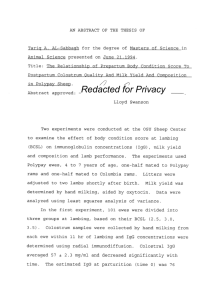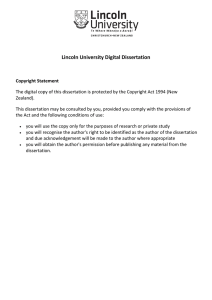Wool production - Public Schools NSW
advertisement
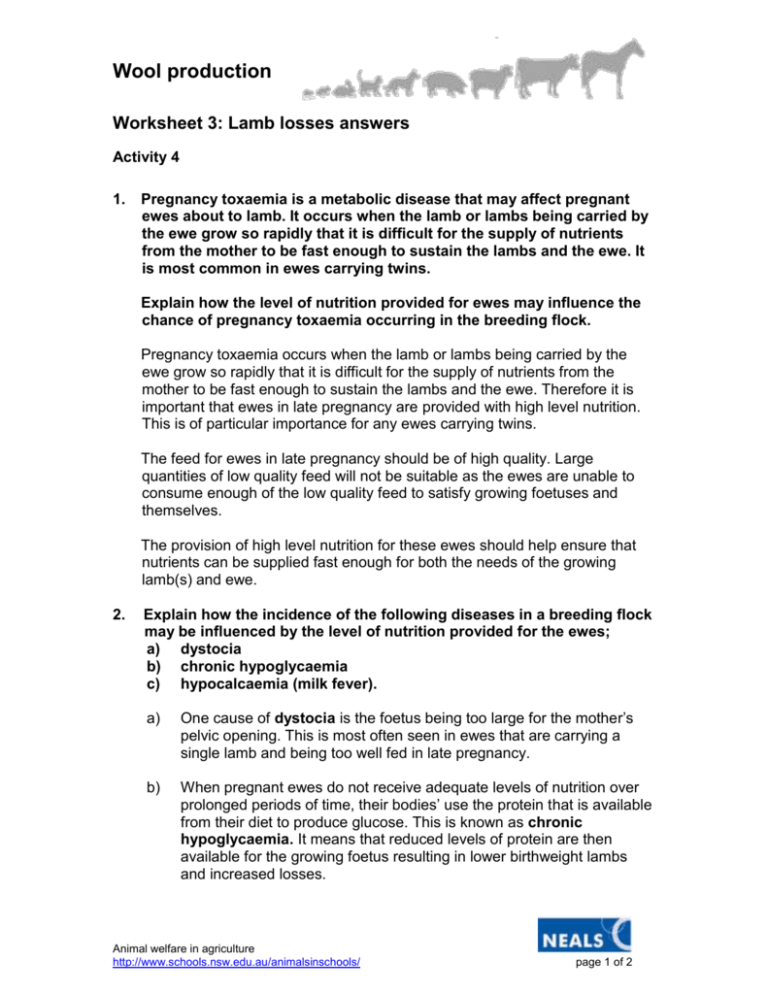
Wool production Worksheet 3: Lamb losses answers Activity 4 1. Pregnancy toxaemia is a metabolic disease that may affect pregnant ewes about to lamb. It occurs when the lamb or lambs being carried by the ewe grow so rapidly that it is difficult for the supply of nutrients from the mother to be fast enough to sustain the lambs and the ewe. It is most common in ewes carrying twins. Explain how the level of nutrition provided for ewes may influence the chance of pregnancy toxaemia occurring in the breeding flock. Pregnancy toxaemia occurs when the lamb or lambs being carried by the ewe grow so rapidly that it is difficult for the supply of nutrients from the mother to be fast enough to sustain the lambs and the ewe. Therefore it is important that ewes in late pregnancy are provided with high level nutrition. This is of particular importance for any ewes carrying twins. The feed for ewes in late pregnancy should be of high quality. Large quantities of low quality feed will not be suitable as the ewes are unable to consume enough of the low quality feed to satisfy growing foetuses and themselves. The provision of high level nutrition for these ewes should help ensure that nutrients can be supplied fast enough for both the needs of the growing lamb(s) and ewe. 2. Explain how the incidence of the following diseases in a breeding flock may be influenced by the level of nutrition provided for the ewes; a) dystocia b) chronic hypoglycaemia c) hypocalcaemia (milk fever). a) One cause of dystocia is the foetus being too large for the mother’s pelvic opening. This is most often seen in ewes that are carrying a single lamb and being too well fed in late pregnancy. b) When pregnant ewes do not receive adequate levels of nutrition over prolonged periods of time, their bodies’ use the protein that is available from their diet to produce glucose. This is known as chronic hypoglycaemia. It means that reduced levels of protein are then available for the growing foetus resulting in lower birthweight lambs and increased losses. Animal welfare in agriculture http://www.schools.nsw.edu.au/animalsinschools/ page 1 of 2 Wool production c) 3. Hypocalcaemia is caused by a deficiency of calcium. It can be caused by a sudden drop in the level of nutrition provided. Sometimes the quality of feed on offer can remain constant but because of other factors that cause stress, e.g. shearing, mustering or bad weather, ewes do not eat the feed provided and receive inadequate calcium. Read the section Twin lamb diagnosis. Identify how the management tool of identifying ewes carrying twins helps to avoid the nutritional problems of pregnancy toxaemia and dystocia in the breeding flock. By identifying ewes carrying twins, ewes can be drafted into two groups, those carrying single lambs and those carrying twins. Each group can then be provided with the appropriate levels of nutrition. While all ewes in late pregnancy require high levels of nutrition, those carrying twins need particularly high nutritional levels to avoid pregnancy toxaemia. Ewes carrying single lambs should not be over fed which may lead to excessive growth of the foetus and resultant difficulty in lambing. 4. Graph the data presented in Table 1: Causes of perinatal mortality in southern NSW for late winter to spring lambings (page 3). You could use a computer to generate a table in an Excel workbook and then produce either a column graph or a pie chart. See lambing.xls for sample answer. 5. Pregnancy toxaemia, hypocalcaemia and chronic hypoglycaemia are three examples of metabolic diseases in sheep caused by nutritional deficiencies during pregnancy and/or lactation. Discuss with your class why these diseases are classified as metabolic and how they differ from some other diseases such as tetanus, pulpy kidney or hairlessness in sheep. Animal diseases may be classified as either hereditary, metabolic or infectious. Hereditary diseases are those in which animals are born with some defect. Examples of these diseases include hairlessness in sheep, dwarfism in cattle and featherlessness in poultry. Metabolic diseases are those in which an organ or system of the body fails to function normally. Examples of these include diabetes in humans, milk fever in cattle and pregnancy toxaemia in sheep. Infectious diseases are those in which a disease causing agent or pathogen enters the body of the host affecting the animal adversely. Examples of these include tetanus, pulpy kidney, blacks disease, coccidiosis, liver fluke and fly strike. Animal welfare in agriculture http://www.schools.nsw.edu.au/animalsinschools/ page 2 of 2

